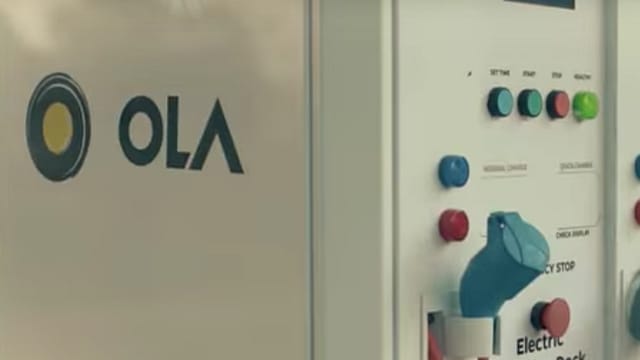Can Ola Electric Mobility make it big?
ADVERTISEMENT

Ola-backed Ola Electric Mobility, which develops solutions to make electric mobility viable at scale, on Friday said it raised ₹400 crore in its first round of investment led by several of Ola’s early investors, Tiger Global and Matrix India and others. The fund raise announcement came just a few hours before the Union Cabinet announced the second phase of the Faster Adoption and Manufacturing of (Hybrid) and Electric Vehicles (FAME) scheme. Through FAME, the government is looking to achieve 30% electric mobility by 2030 and has an outlay of ₹10,000 crore for a period of three years with effect from April 1, 2019.
While the timing may seem perfect for Ola Electric Mobility, the journey on the path of electric mobility is very new, not just for the company but the country as well. Hence, even though the market for electric vehicles or EVs is expanding in India, appropriate business models are needed to help create synergy among stakeholders, and leverage their competence and expertise towards a common outcome, say experts.
“A business model should aim at achieving operational and financial sustainability by bringing in technological innovation, effective grid management, and improving efficiency,” says Vishwa Udgirkar, partner, Deloitte India. Deloitte India released it latest report on the future of mobility on Thursday.
January 2026
Netflix, which has been in India for a decade, has successfully struck a balance between high-class premium content and pricing that attracts a range of customers. Find out how the U.S. streaming giant evolved in India, plus an exclusive interview with CEO Ted Sarandos. Also read about the Best Investments for 2026, and how rising growth and easing inflation will come in handy for finance minister Nirmala Sitharaman as she prepares Budget 2026.
When it comes to Ola Electric Mobility, it was initially established to enable Ola’s electric mobility pilot program in Nagpur. In 2018, Ola subsequently announced ‘Mission: Electric’ to bring 1 million electric vehicles on Indian roads by 2022. It has identified charging as the first problem in electric mobility and is running several pilots to deploy electric vehicles and charging solutions, including battery swapping stations, electric two-wheeler and three-wheeler services, amongst others.
“The first problem to solve in electric mobility is charging: users need a dependable, convenient, and affordable replacement for the petrol pump. By making electric easy for commercial vehicles that deliver a disproportionate share of kilometers travelled, we can jumpstart the electric vehicle revolution,” says Anand Shah, head of Ola Electric Mobility.
While Deloitte India sees a problem in such a model, it believes Ola could turn things in favour of Ola Electric Mobility. For charging service providers, it is difficult to generate sufficient revenue solely from power sales to EV drivers that charge their vehicles in order to retrieve the investment in the infrastructure, it says.
“Cab aggregators help in aggregating the demand by deploying electric vehicles in bulk in their fleet which will end up utilising charging stations. This model brings in demand for the vehicles charging stations thus, enables PT (public transport) corporations and aggregators to generate additional revenue from vehicle charging,” Deloitte India says in the report cited above.
“However, there is limited financial and risk bearing capacity of PT corporations or aggregators for large deployments. Lack of expertise and experience is a potential drawback of the model.”
Meanwhile, Ola Electric Mobility’s business, led by Ola executives Anand Shah and Ankit Jain, has a charter to develop platforms and infrastructure to make electric mobility a reality at scale. Building on various pilot initiatives, the company is primarily focused on deploying charging and battery swapping networks focused on the commercial electric vehicle segment. It has already partnered with several OEMs (original equipment manufacturers) and battery manufacturers and intends to work closely with the automotive industry to create seamless solutions for electric vehicle operations. In April, it said it will introduce a fleet of 10,000 EVs over the next one year.
“At Ola Electric, our mission is to enable sustainable mobility for everyone. India can leapfrog problems of pollution and energy security by moving to electric mobility, create millions of new jobs and economic opportunity,” said Bhavish Aggarwal, co-founder and chief executive, Ola.
India’s electric vehicles (EV) market is still very nascent. EVs consist just about 1% of the total automobile sales. A large chunk of the domestic EV market, almost 95%, is still ruled by two-wheelers and three-wheelers. Four-wheelers and cars accounted for less than 8% of total sales in 2017, according to the Society of Manufacturers of the Electric Vehicles. The opportunity is huge and attractive to investors.
“We are excited to invest in Ola Electric Mobility, which we believe is the early front-runner in this space and well-positioned to build the ecosystem for electric mobility,” says Lee Fixel, Partner, Tiger Global Management.
Mayank Singhal, managing partner at Millennial Capital and former investor in Ola from RNT Capital, says the future of global mobility lies in the convergence of autonomous driving, electric vehicles and ride sharing, or what is often referred to as the mobility trifecta.
“I have doubts about the pace of adoption for autonomous in India given significant local nuances. But if you count that out, the combination of ride sharing and EV is a very powerful one, and this is a great step forward for Ola," says Singhal.
Can Ola Electric Mobility deliver on the opportunity? Only time will tell. For now, it has cash in hand, investors who believe in this business and a market with a big opportunity.
